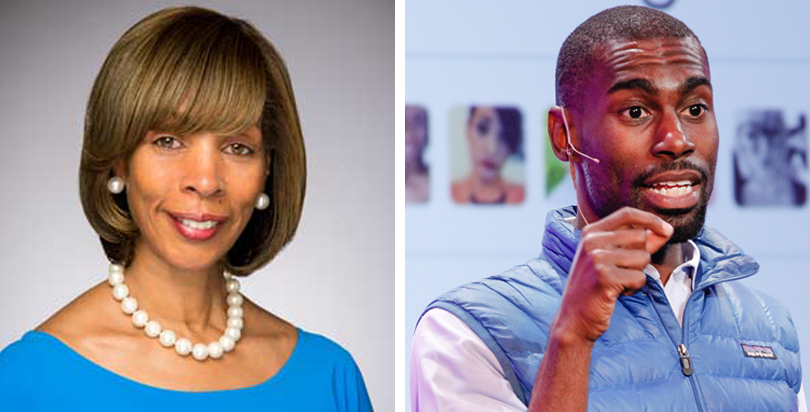Baltimore’s Next Mayor: 13 Democrats Who Want the Job, and What School Challenges Await Them

The 74’s Carolyn Phenicie examines local and state level elections where education will play a critical role this November.
Updated April 28, 2016
State Senator Catherine Pugh was the victor in the city's primary, besting former mayor Sheila Dixon by about 3,000 votes. Activist DeRay Mckesson came in sixth, with about 2 percent of the votes cast, The Baltimore Sun reported. Pugh will face Republican Alan Walden, a former radio host, in the general election in November.
The next mayor of Baltimore better be ready to answer the question “How?” How should the city deal with thousands of abandoned houses? How can the community remedy the host of issues raised by protesters after the death of Freddie Gray, while bringing down a rapidly rising crime rate? How will Baltimore once again attract new residents, after seeing more than a third of the population walk away over the past half century?
All of those issues and one that touches every facet of life in Charm City, education, will be at the forefront of voters’ minders as they cast their mayoral ballots this fall.
“Clearly, in terms of a positive multiplier effect on everything in the city – income, expenditure, new buildings, you name it, attracting new industry, bringing more strength of numbers from the professional classes into the city – schools are important,” said David Steiner, executive director of the Johns Hopkins Institute for Education Policy.
More than two dozen candidates have filed to enter the race, including 13 Democrats. The April 26 Democratic primary serves as the de facto general election: Democrats enjoy a 10 to 1 voter registration advantage, and Baltimore hasn’t elected a Republican as mayor since the 1960s. Current Mayor Stephanie Rawlings-Blake opted not to run for re-election.
The most pressing issue in the city, one that has made national news and affected the city’s schools, is the death of Freddie Gray in police custody in April 2015 and the ensuing protests and trials of police officers involved in the “rough ride” Gray took shortly before his death.
“Freddie Gray is going to be the looming presence” in the election, said Matthew Crenson, a political science professor emeritus at The Johns Hopkins University.
Two candidates in particular have connections to the case. City Councilman Nick Mosby is married to Marilyn Mosby, the state’s attorney responsible for the prosecution of the six police officers charged in Gray’s death. And just ahead of the February filing deadline, activist DeRay Mckesson entered the race. Mckesson, a former Minneapolis school administrator, Teach for America alumnus and Baltimore native, rose to prominence with the Black Lives Matter movement and Campaign Zero, which aims to end killings by police.
What’s sometimes called the Baltimore uprising last spring forced schools to close for a day, and district officials late last year prepared for further disturbances following the verdict in the first officer’s trial. (That ended in a hung jury. The rest of the officers’ trials were delayed while the state’s high court decided whether the first officer could be forced to testify against the other officers. The next trial is set to begin May 10.)
On a smaller scale, a recent incident in which a Baltimore police officer slapped and kicked a student outside a high school was captured on video and added to an ongoing national conversation about how police stationed in schools should deal with children. (Read our recent coverage: Video of Baltimore Cop Slapping Student Reignites Big Questions About Child Training for School Cops)
Baltimore schools have seen plenty of school safety issues lately, which are seen as broadly part of the same set of problems that led to the arrest of Gray and subsequent protests. A high school student was charged with attempted murder following the violent beating of a football teammate in September. Two months later, at a different high school, one student stabbed another. The victim in that stabbing died about a month later.
Gray, in addition to being the victim of alleged police misconduct, faced a problem that has plagued Baltimore and its schools for years, lead poisoning. Unlike children in Flint, youngsters in Baltimore are usually exposed to lead from paint in older homes rather than through water. As much as 12 percent of the city’s population under the age of six has tested positive for dangerously high levels of lead in any given year since 2002, according to data from Johns Hopkins University. The rates seem to be dropping, but the numbers might underestimate the problem. The Centers for Disease Control in 2012 lowered the threshold for what is considered “safe” lead exposure, and the rates from the Hopkins data use the old standard. Exposure to lead can lead to a host of cognitive impairments and behavioral problems that hamper academic achievement.
The mayor of Baltimore has less control over schools than leaders of other large cities. A school board selected by both the governor and mayor appoints the superintendent who oversees day-to-day operations. None of the candidates has indicated whether they’d like to keep current schools CEO Gregory Thornton, though at least two have said they’ll ask the state legislature for sole authority to select the school board, The Baltimore Sun reported.
Despite that more limited influence, the next mayor will still face scores of issues related to school achievement and finance.
Academics and career prospects, as ever, are also key issues. The city’s high school dropout rate for the class of 2015 increased for the first time in four years, rising from 10.9 percent to 13.2 percent. (The city said the rise is “partly due to ongoing improvements in record keeping at the district.”) The four-year graduation rate remained essentially flat, at 69.5 percent.
Baltimore, like other big cities across the country, has a substantial achievement gap between its black and white students. The city’s results on the National Assessment of Educational Progress in 2015 put it at the bottom of the pack nationally, ahead of only Detroit. Results were worse than in previous years, and a substantial gap between black and white students continued.
“Above all else, you’ve got a situation in which many, many, many students, if they make it through high school, are nowhere close to being prepared for any further education without massive remediation. That is at the heart of the whole educational problem,” Steiner said.
The city’s next leader will also have to deal with the traditional nuts and bolts of school funding.
The city gets a larger portion of its schools funding from the state than other areas in Maryland. The city’s Democratic leadership has in the past fought with Republican Gov. Larry Hogan over additional funding for the schools. The system is set to lose $24 million in state funding next year, due primarily to declining enrollment.
Schools CEO Thornton in a Feb. 19 letter to parents and staff said that although district leaders are working to secure more money, “additional cuts will be inevitable and painful.” All options will be considered as long as they can be applied fairly across the district, Thornton wrote.
City officials are also in a battle with charter schools over funding.
State law requires charters to get “commensurate funding” with traditional public schools. The state board of education has said that means charters should get 98 percent of the per-pupil amount as traditional public schools, with 2 percent staying with the district office for central expenses. The district for years has said that giving the 98 percent allocation to charters would cripple funding for traditional schools and has held 10 to 14 percent for central expenses. Charter advocates have for just as long disagreed with the district on which expenses are appropriate to include in those calculations.
This year, on top of the questions about central office costs, the district proposed re-allocating charters’ per-pupil funding, giving a base amount with supplements for students in poverty and English language learners. That move would have slashed funding at some of the city’s charter schools and, advocates said, threatened the closure of more than 10.
Charter leaders sued the city and attempts at mediation fell through in the fall. By late February, the district counter-sued, alleging that the charters don’t serve students with disabilities and fail to submit budgets and timely attendance and financial records.
The funding issues will be among the next mayor and school board’s most pressing, Steiner said. “Uncertainty about funding is one of the most difficult things to handle, so it’s going to be important to try to resolve.”
The Contenders
Perhaps the best-known candidate for mayor is Sheila Dixon, who previously served as mayor from January 2007 through January 2010. She was president of the city council and assumed office after then-mayor Martin O’Malley was elected governor.
She resigned office after a jury convicted her of theft for stealing about $500 worth of gift cards intended for charity. Dixon also entered an Alford plea – a mechanism that allows a defendant to admit that prosecutors have enough evidence for a conviction without admitting guilt – on perjury charges related to gifts from her boyfriend, a developer who received tax breaks and city contracts.
She was required to perform community service, make donations to charity and resign from office. In exchange, she received probation before judgment, which allowed her criminal record to be cleared if she completes those terms within four years. She completed all those requirements by 2012.
In a March poll conducted by the Baltimore Sun and University of Baltimore, Dixon had the backing of 24 percent of voters, just behind the 26 percent who favor state Sen. Catherine Pugh.
The other top Democratic contenders, in order of support, are: David Warnock, a businessman and co-founder of a charter school; Mosby, the city councilman; Elizabeth Embry, whose public service career includes work in housing and labor and who is now a deputy state’s attorney; and Carl Stokes, a city councilman and former COO of a boys’ charter middle school. No other candidates registered above 1 percent support, and 25 percent of respondents remained undecided.
Baltimore for many years held its mayoral elections in odd-numbered years; this is only the second time it has coincided with higher-profile contests.
This year, in addition to the presidential election, Maryland voters will elect a new U.S. senator. Barbara Mikulski, the most senior woman in the Senate, is retiring. Reps. Chris Van Hollen and Donna Edwards, who both represent parts of the Washington, D.C. suburbs, are vying in the Democratic primary to replace her.
Because neither has a base in Baltimore, each will be concentrating on turning out supporters there. How that could affect turnout for the mayoral election is anyone’s guess, Crenson said.
Get stories like these delivered straight to your inbox. Sign up for The 74 Newsletter

;)
